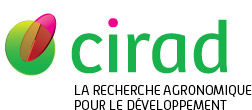Naudin Krishna, Balarabe Oumarou.
2009. Use of cover crops by North Cameroonian farmers in a cereal/cotton cropping system.
In : Cover crops and crop yields. Latos Tomas H. (ed.)
Résumé : In North Cameroon, from 2001 to 2004, more than 250 farmers tried direct seeding mulch-based cropping systems (DMC) in their fields. DMC systems were based on traditional farmer rotation, i.e., cereal/cotton. In their own fields, farmers compared cereals (maize, sorghum, millet) cultivated with conventional techniques, and the same cereal conducted with DMC techniques, i.e.: i) intercropped with a cover crop (Mucuna pruriens, Brachiaria ruziziensis, Crotalaria retusa, Vigna unguiculata, Dolichos lablab); and ii) sowed without ploughing from the first or the second year of experimentation. Associations were made for the following objectives: i) produce aboveground biomass to produce mulch for the following crop (mainly cotton), ii) improve the soil's physical and chemical quality through the contribution of associated plants, iii) produce forage, iv) help to control weeds, v) protect the soil surface against erosion and rain impacts, vi) produce grains for human or animal consumption. Each of the five cover crops used are different regarding their fulfillments of the above objectives and their adaptation to North Cameroon local agro-climatic conditions (rainfall from 700 to 1200 mm). Thus, Brachiaria ruziziensis produces aboveground biomass in quantity (4-5 T of dry matter/ha even when associated with cereal) and quality (persisting of the mulch for over one year after production). Further, it seems to be very efficient in controlling Striga hermonthica and it is a good forage. However, it can impoverish the soil if its biomass is exported several times without any fertiliser or manure input. Crotalaria retusa is a nitrogen-fixing legume and thus can improve soil fertility. Furthermore, this plant is nonedible for cattle, which is an advantage for farmers who cannot protect their field from grazing during the dry season. C. retusa is also very efficient in fighting other weeds. Four years of experimentation with farmers permits us to produce practical recommendations for intercropping of cereals with cover crops: sowing date, crop type, tolerance to herbicides, limitation of competition with cereals, etc. This experimentation has also allowed us to determine the behaviour of the five cover crops under the farmer's conditions.
Mots-clés Agrovoc : plante céréalière, culture sous couvert végétal, plante de couverture, Crotalaria, Brachiaria ruziziensis, Vigna unguiculata, Lablab purpureus, Mucuna pruriens, Gossypium
Mots-clés géographiques Agrovoc : Cameroun
Mots-clés géographiques complémentaires : Cameroun nord
Classification Agris : F08 - Systèmes et modes de culture
F07 - Façons culturales
P36 - Érosion, conservation et récupération des sols
Champ stratégique Cirad : Axe 1 (2005-2013) - Intensification écologique
Auteurs et affiliations
-
Naudin Krishna, CIRAD-PERSYST-URP SCRID (MDG)
 ORCID: 0000-0002-9108-2456
ORCID: 0000-0002-9108-2456
- Balarabe Oumarou, IRAD (CMR)
Autres liens de la publication
Source : Cirad - Agritrop (https://agritrop.cirad.fr/555490/)
[ Page générée et mise en cache le 2024-04-05 ]




